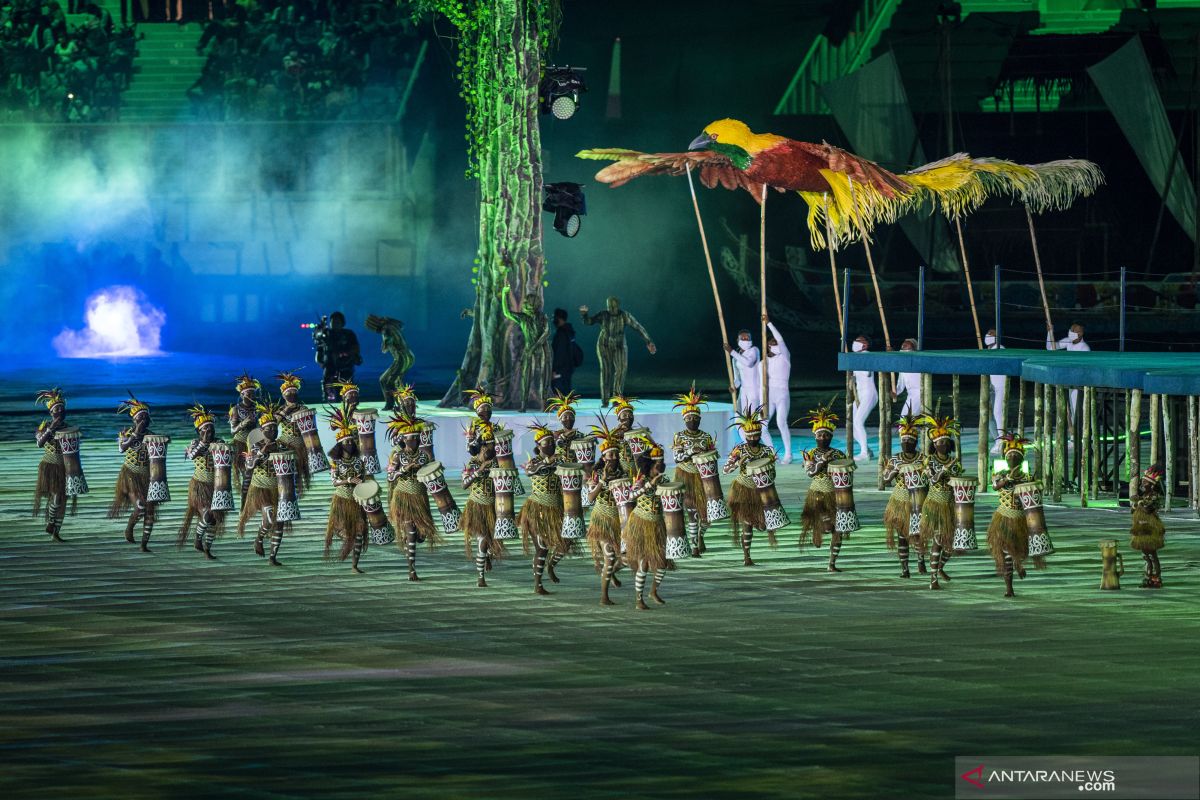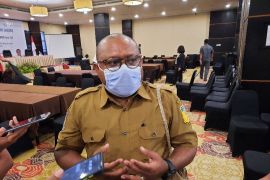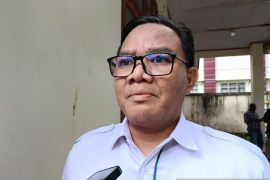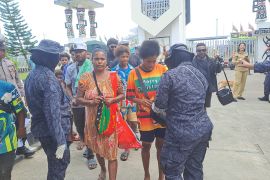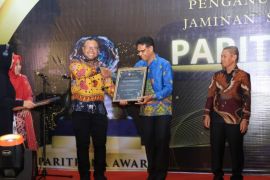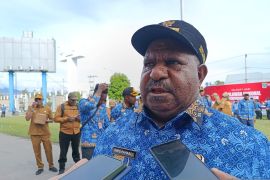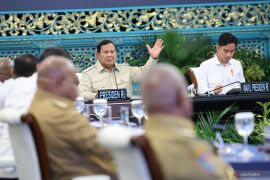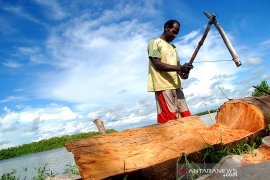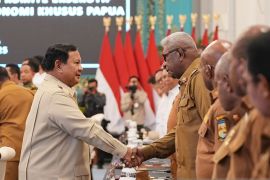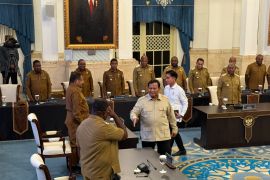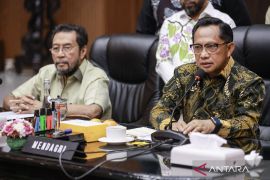The small powerhouses shook the arena hosting the grand sports event and enthralled the viewers when they performed the traditional dance, Akhokoy.
It is a dance unique to Yokiwa Village in Sentani.
The dance, accompanied by chanting in Sentani language, holds meaning that is dear to its people. It praises Ondoafi, or the traditional chief, respected by everyone he leads.
Turns out it is a dance that one cannot just show to anyone but is, in fact, a part of a sacred ritual of Yokiwa Village.
“This dance is a (mix of) chant and one that has existed since a long time and tells about events and happenings in everyday life. Chanted from generation to generation, the chant teaches values and offers guidelines to life for the public,” Markus Rumbino, accompanying the children from NDS Studio to perform the Akhokoy dance, explained.
Akhokoy was introduced to people of the archipelago through the first National Sports Week event in eastern Indonesia to showcase the greatness, diversity, and beauty of Papua, a piece of heaven on earth.
An inheritance from three tribes
Akhokoy reflects how the notion of unity and diversity can fuse together, giving birth to beauty. Such is the reflection of the three tribes in Yokiwa Village: Awoitauw, Fiobetauw, and Mimitauw.
The three tribes unite to accept their respective diversities and to finally create a legacy that can be passed down through generations.
Akhokoy dance holds a place akin to Kromo Inggil on Java.
Ondoafi is positioned as someone who is respected for his role in protecting and uniting the people of the three tribes.
The dance must also be performed only by Yokiwa Village's native people wearing traditional Sentani attire.
The dance is led by a man. He wears a tassel skirt, with a typical Sentani motif adorning his body. He also carries an Ame, a musical instrument made of shells, through which he gives instructions.
The leader also guides both female and male dancers in tassel costumes to chant and dance.
They also perform chants in the traditional language used in Sentani. Only these three tribes possess the skill.
Hence, Akhokoy is performed exclusively by people from Yokiwa Village and not by outsiders freely.
In addition to praising the greatness of the traditional head, Akhokoy serves as a reminder for the community to not be arrogant.
Hence, the events that are sung through chants to complete the Akhokoy dance are continuously updated, so they can be relevant to the current generation.
Rumbino noted that one of the latest events included in his performance at the Papua Rise Sports Palace was the Sentani Flash Flood that had left them devastated.
This incident was incorporated in Akhokoy to remind the people of Sentani to not harm the environment and protect nature at all costs, so that such an event does not recur.
The importance of Akhokoy's role as a way of life and also as a reminder that is ingrained in the hearts of the Sentani community is what makes this dance highly preserved.
In order for this event to be widely known by Indonesian public, the permission of the native people of Yokiwa Village is needed.
Finally, the NDS dance studio was allowed to perform the typical dance from Sentani to make the National Sports Week more festive.
“Since PON is a big national event, the Chief gave permission. Children of the younger generation (who are members of the NDS) are allowed to introduce the culture of Yokiwa Village to the people of the archipelago. Thus, the people of the archipelago get to know Papua, which is beautiful and has broad diversity,” Rumbino affirmed.
One of the Akhokoy dancers, under the guidance of NDS, Dinna Awoitauw, admitted to sensing pride on being able to introduce the traditional dance of her village to the entire country.
She introduced Papuan diversity through artistic forms while also learning in-depth about this sacred dance.
She believes it is a good way to be reminded of the roots of the current generation.
“This Akhokoy dance is very good. Through the Akhokoy dance, we get to know about the folklore in the past. This is told or retold through Akhokoy's dances and songs,” she remarked.
Akhokoy for the new generation
It took years for Awoitauw and her friends at the NDS Studio to learn about Akhokoy.
At first, she was hesitant, as she thought she was still young. However, her keenness to introduce the beauty of Papua through art motivated her to explore Akhokoy.
Time ticks. Seconds become minute, minutes turn into hours, and eventually years have passed by as she perfected her training. It paid off, as it brought pride for her and others.
Not only does it becomes a method for kids to understand the roots and depth of its culture, but now Akhokoy is also a means for the children of Yokiwa Village to introduce the diversity of Papua to the nation.
For instance, in 2016, NDS Studio managed to snatch a win in the Indonesian Children's Karawitan Concert hosted at the Jakarta Arts Building (GKJ).
Akhokoy also bridges the gap between the younger generation of Yokiwa and the world outside them.
By introducing Akhokoy to other areas of the archipelago, the children can learn and gain new knowledge from other areas of the Earth.
Akhokoy is expected to thrive for generations to come, not only to preserve the historical roots of Yokiwa Village but also to offer a small glimpse of Papua's diverse beauty in the eyes of the people of the archipelago.
Related news: Papua PON venues to become investment for future athletes: Governor
Related news: Vice President to attend Papua PON closing ceremony on Friday
Related news: PON continues with stricter health protocols after COVID cases emerge
Editor: Rahmad Nasution
Copyright © ANTARA 2021
